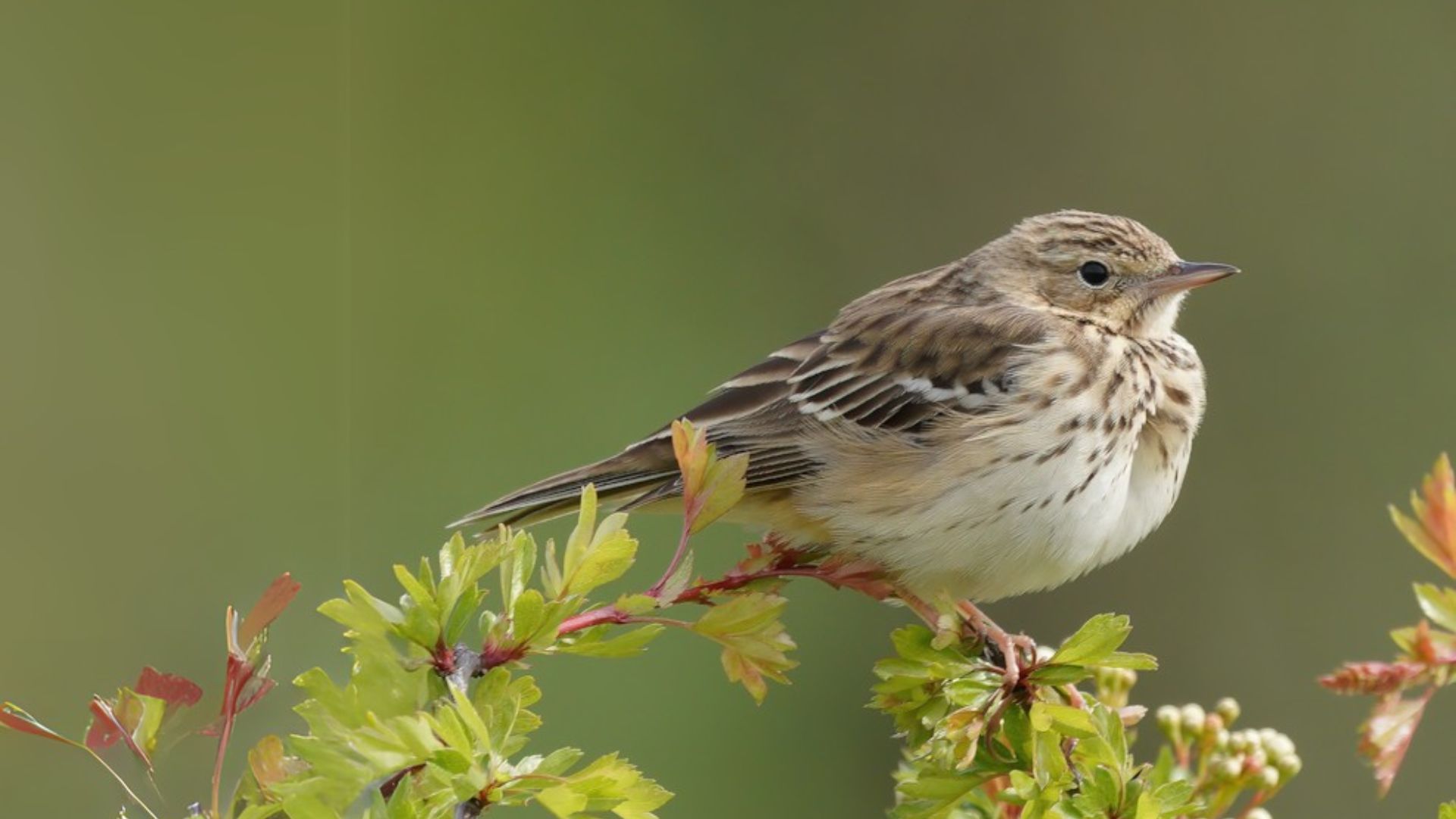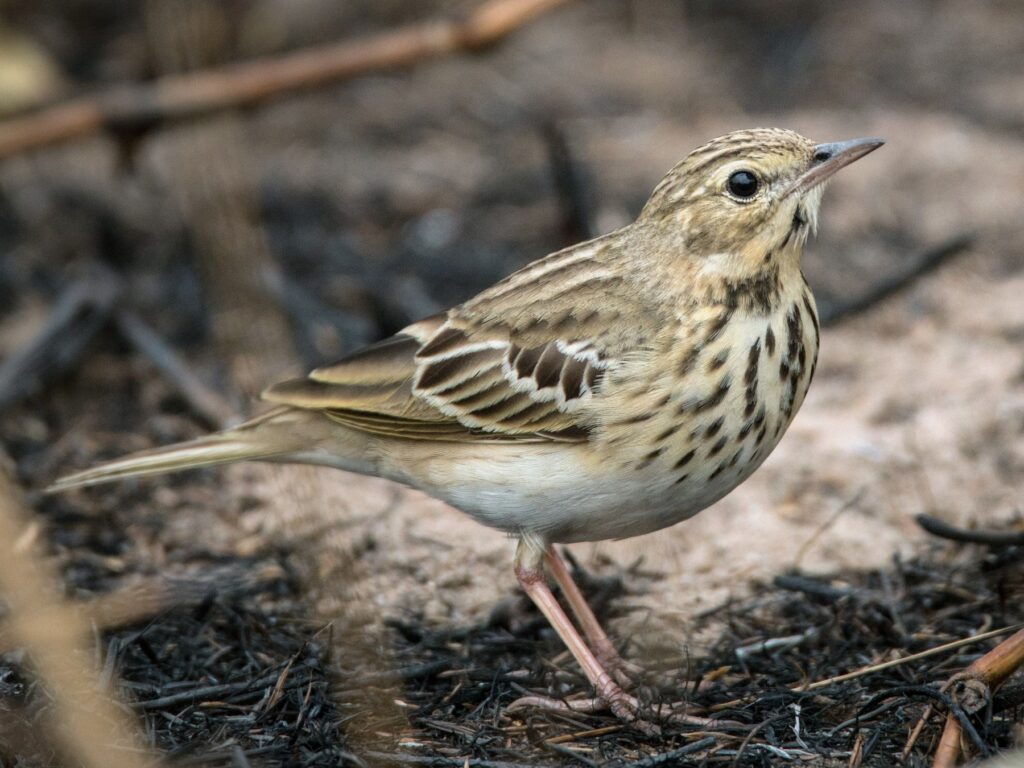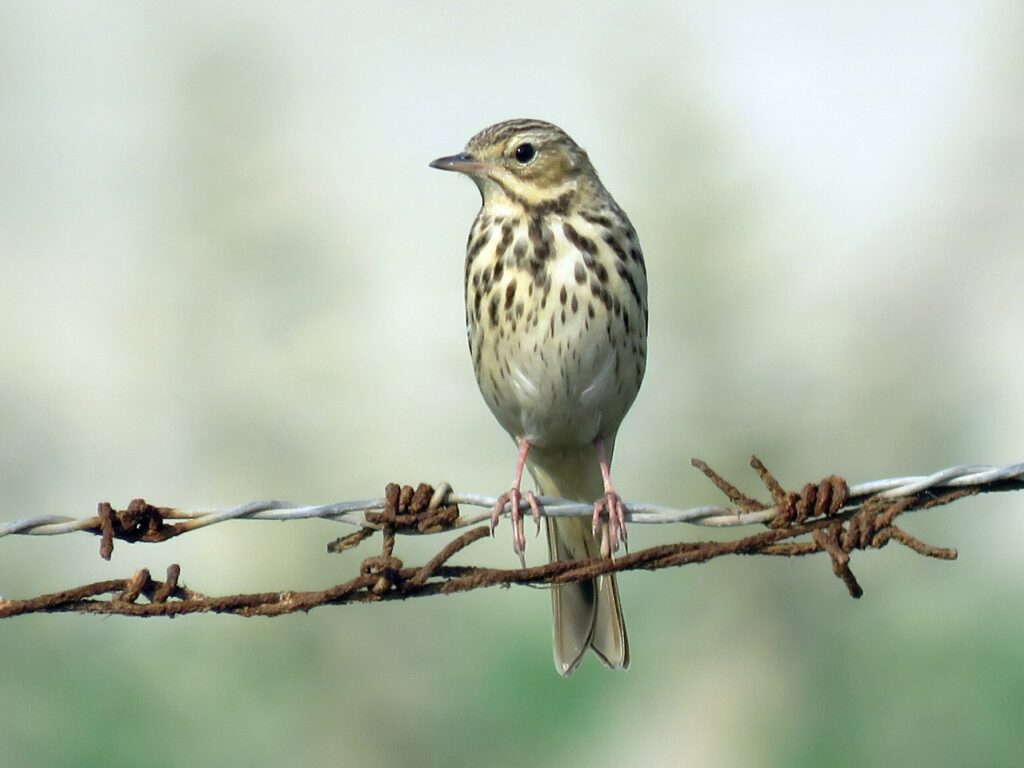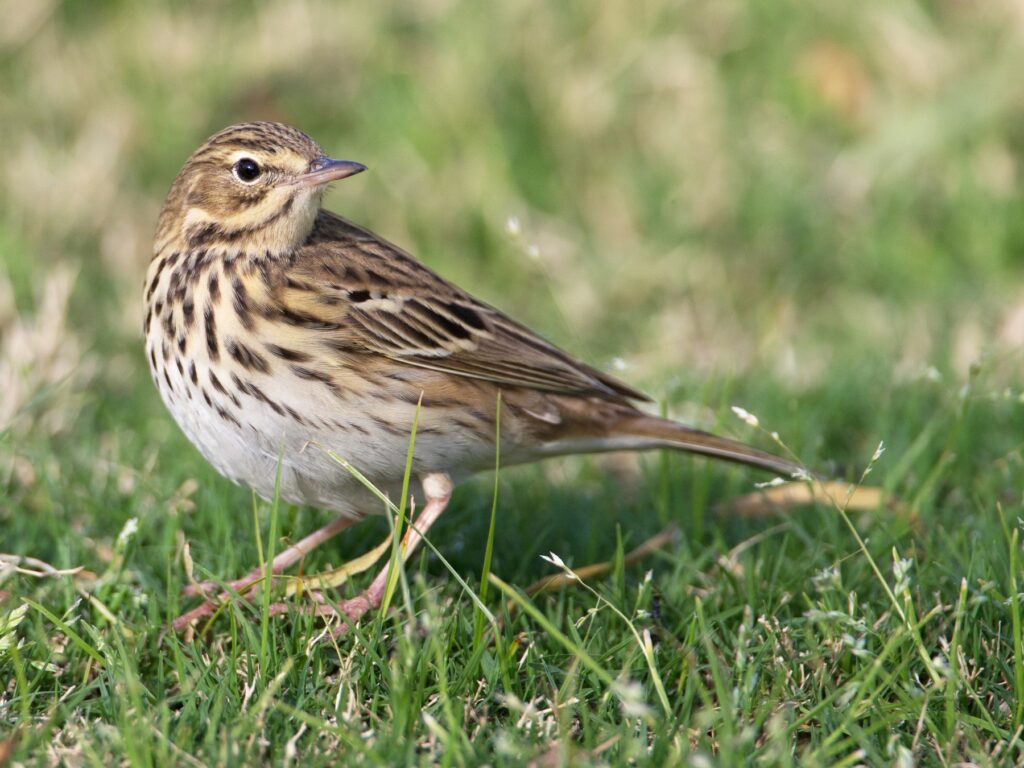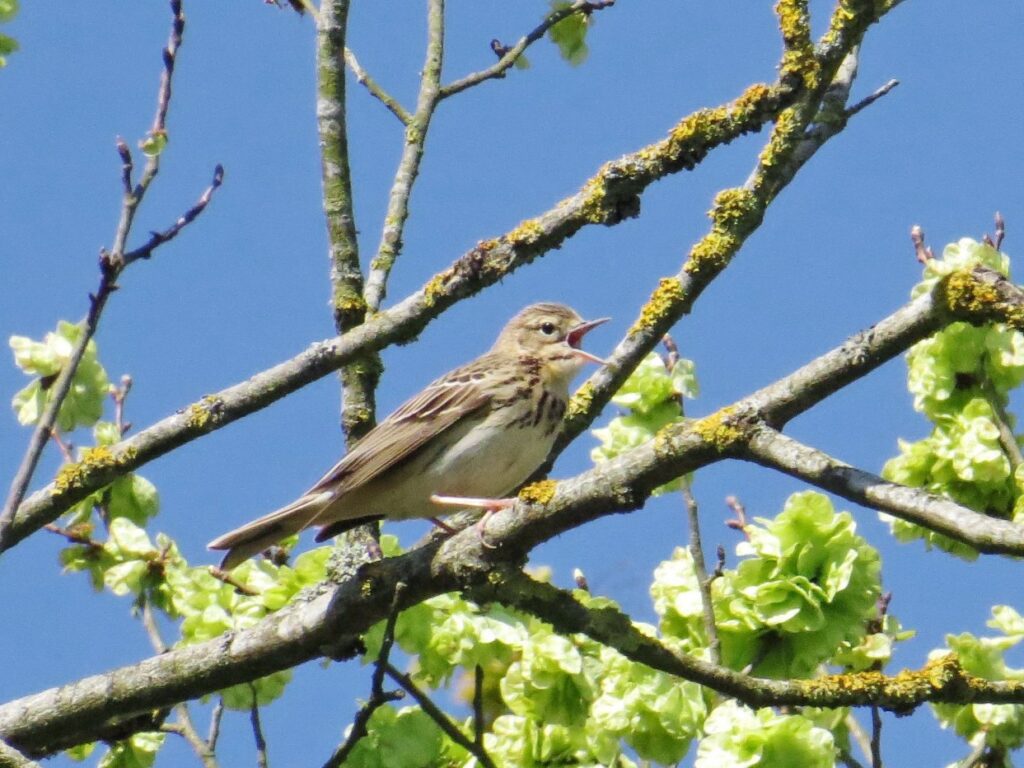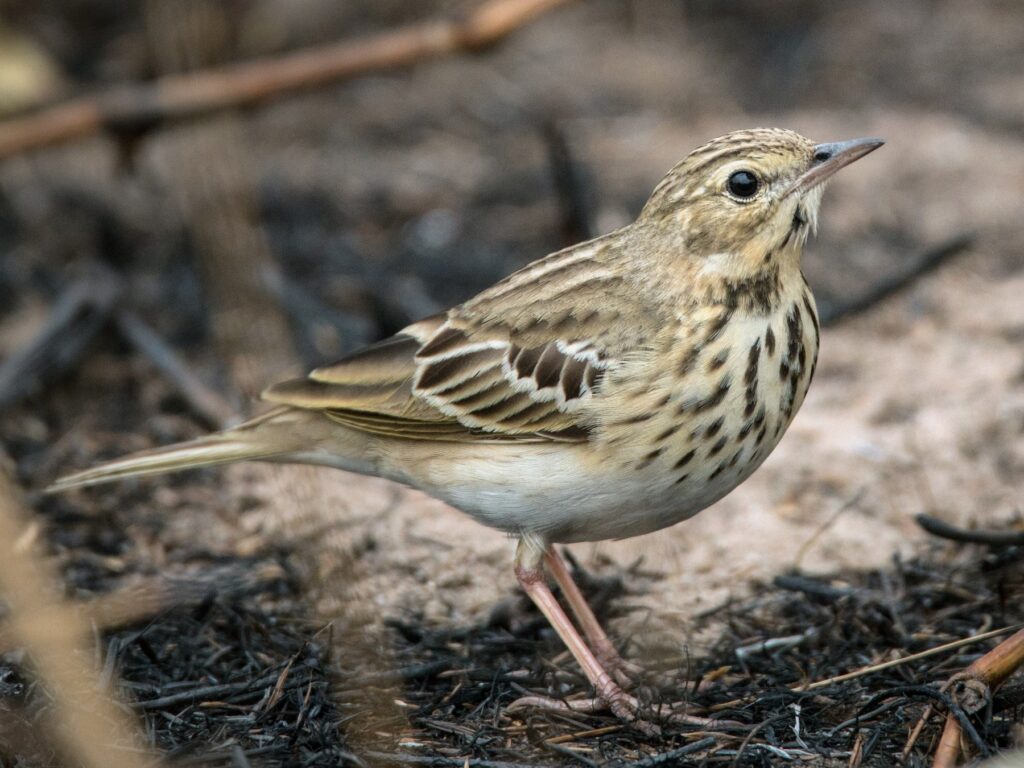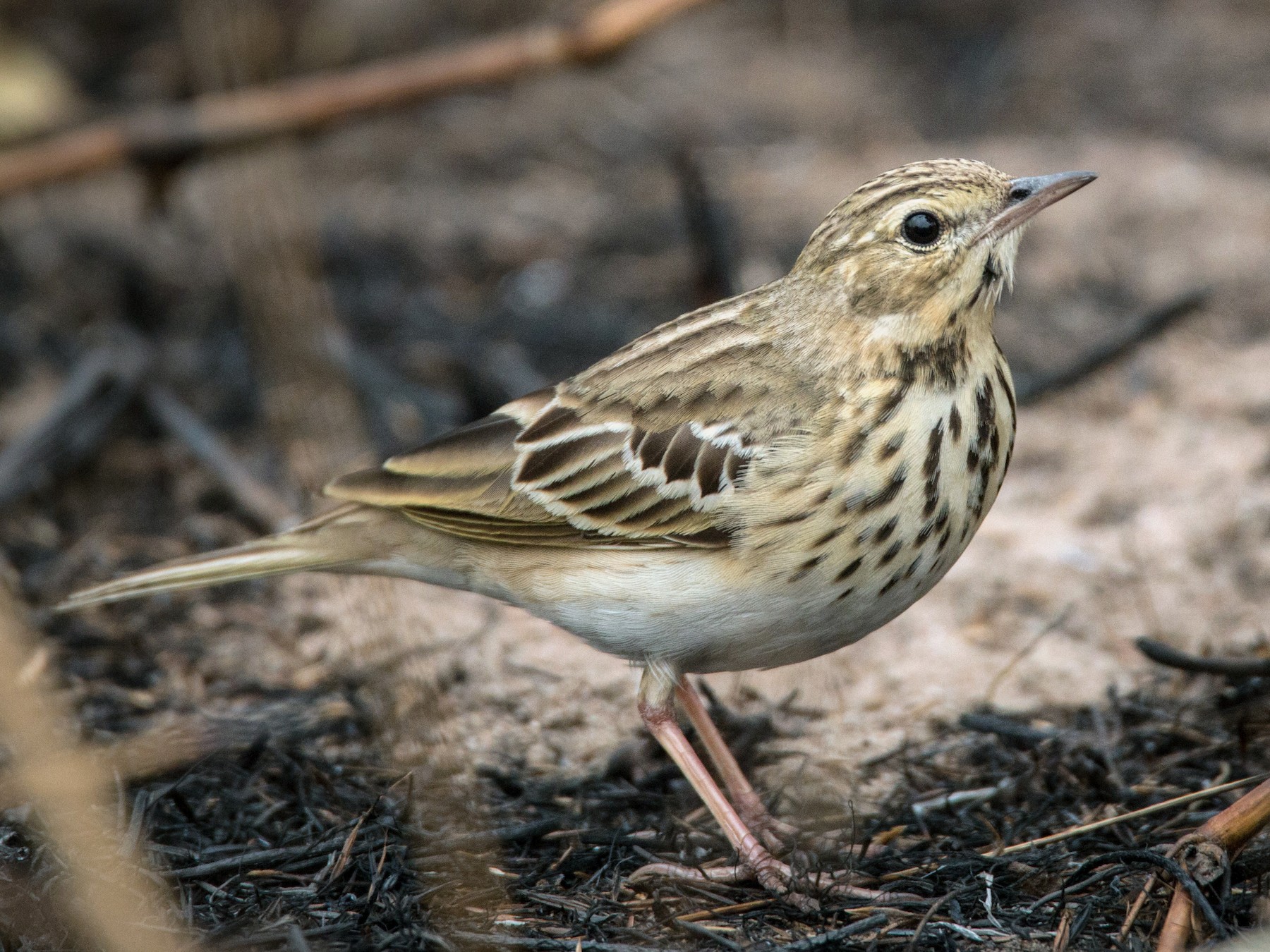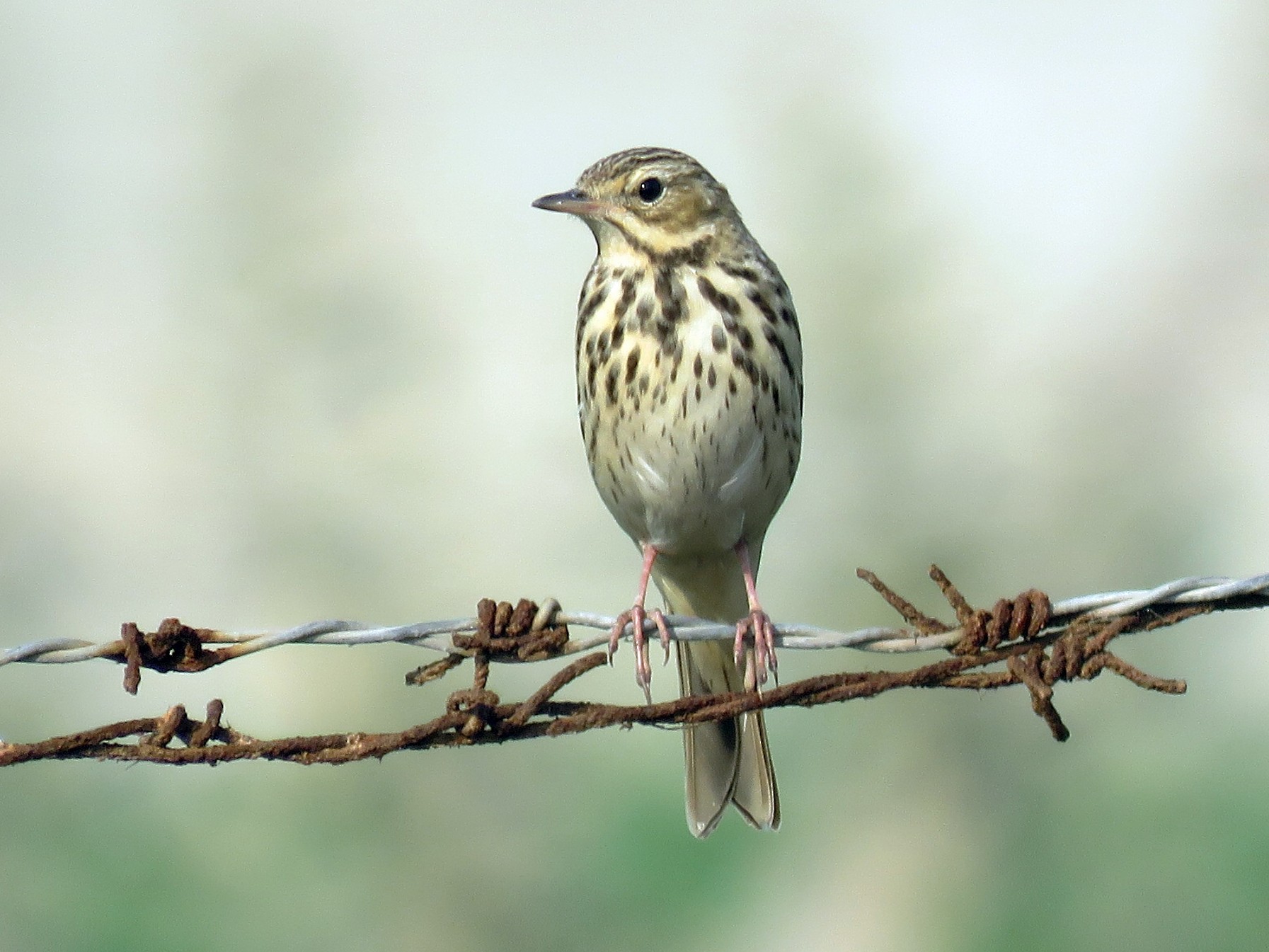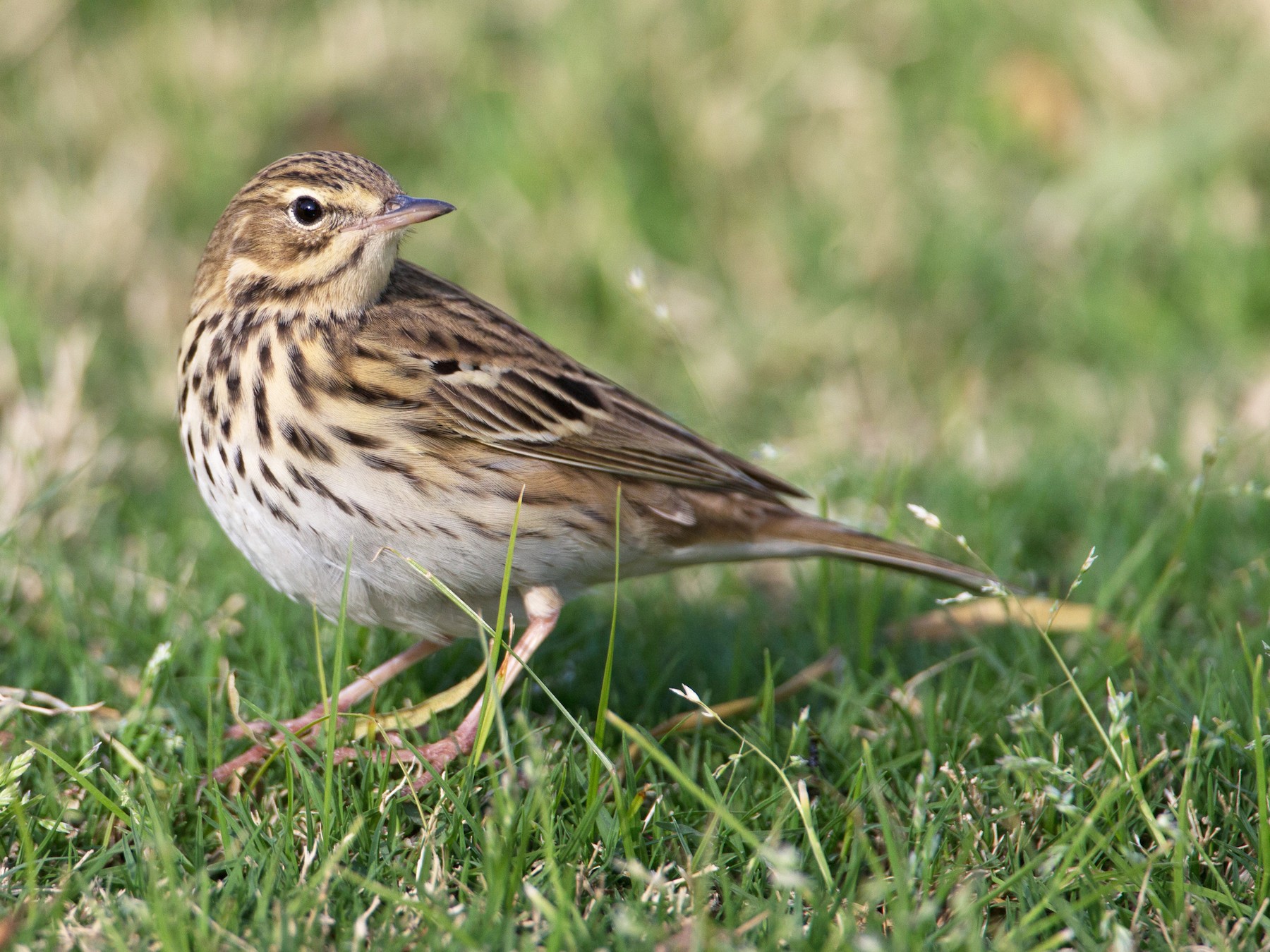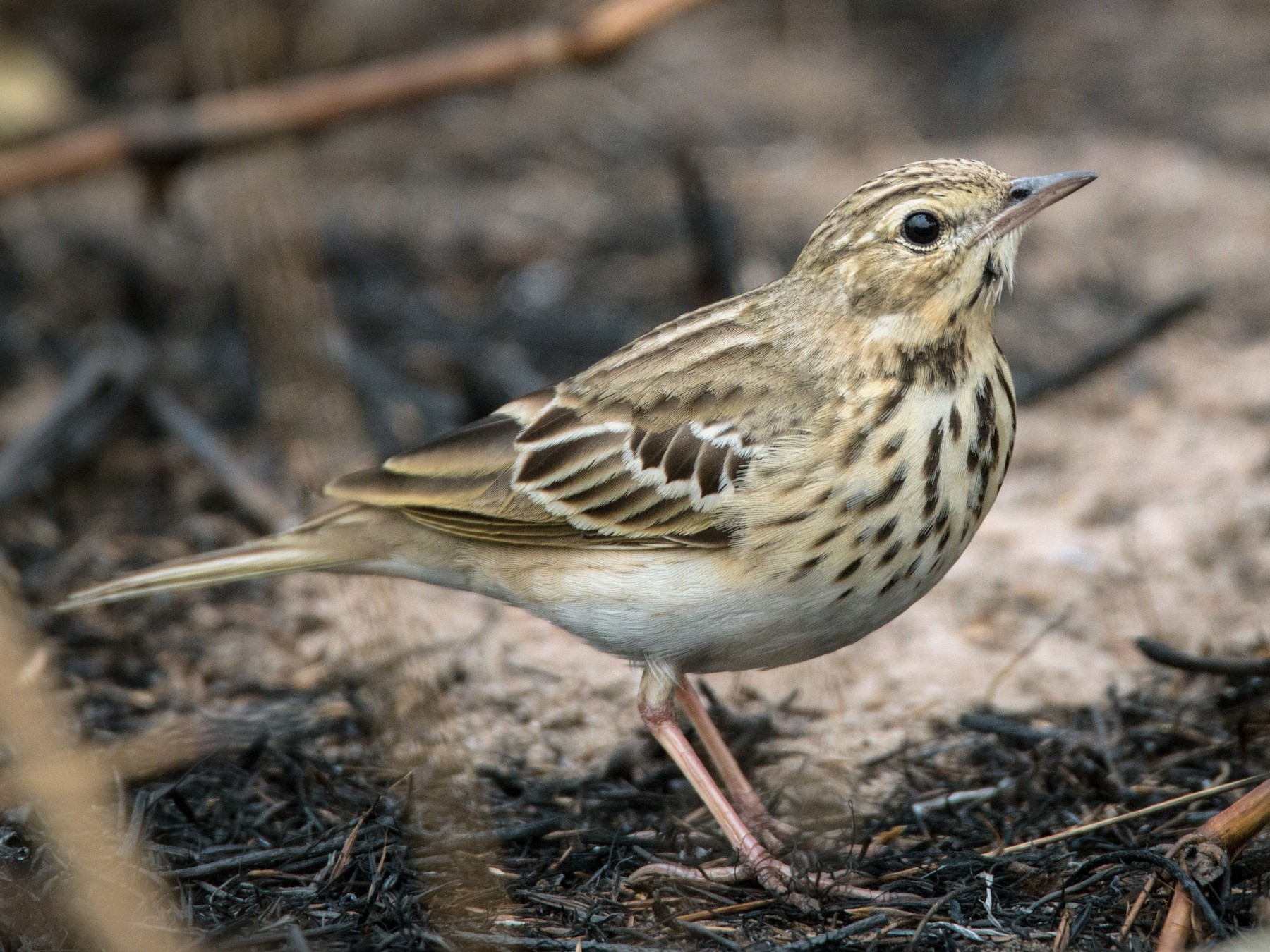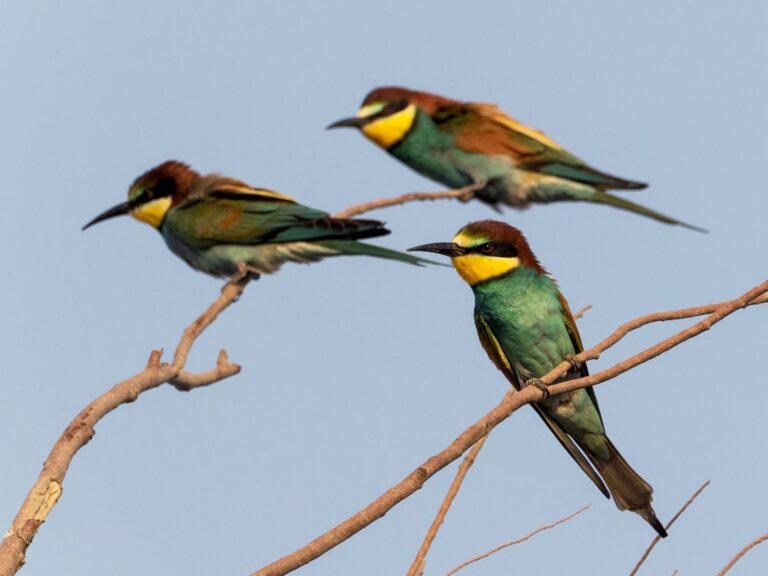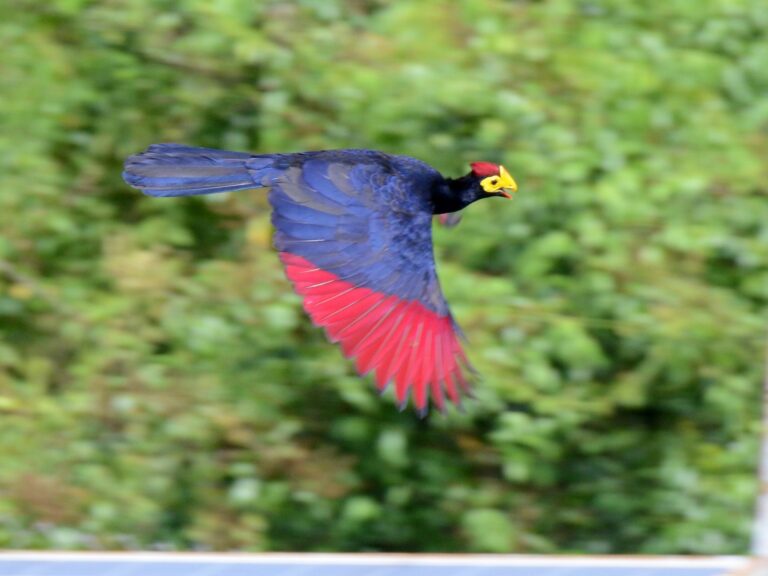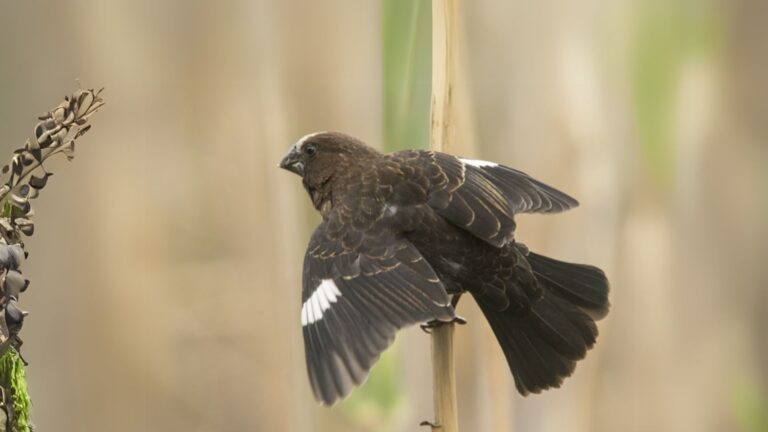Tree Pipit: The Melodic Migrant of Wooded Landscapes
The Tree Pipit grabs your attention with its beautiful songs and quirky behaviors. This small songbird pops up in grasslands dotted with trees across Europe and parts of Asia.
It adapts well to different places and plays a real part in the ecosystem. Birdwatchers love the Tree Pipit for its nesting habits and those unmistakable calls.
It usually nests on the ground, which puts it in the path of predators and makes it vulnerable to habitat loss. If we want to help this delightful species, we really need to understand its life and habits.
Key Takeaways
- The Tree Pipit thrives in grasslands and is noted for its melodic songs.
- Conservation efforts are vital to protect its habitat from loss and degradation.
- This bird holds a special place in birding culture and nature appreciation.
Species Overview
The Tree Pipit stands out for its distinct look and behaviors. Let’s dig into its taxonomy, physical features, and how it stacks up against similar birds.
Taxonomy and Classification
Scientists call the Tree Pipit Anthus trivialis, and it belongs to the Motacillidae family with other pipits. Its alpha code is TRPI.
You’ll mostly find it in Europe and parts of Asia during breeding season. People used to lump it together with the Meadow Pipit (Anthus pratensis) because of similar habits, but now they treat it as a separate species. That makes life easier for birders and researchers trying to pin down which bird is which.
Physical Description and Identification
Tree Pipits measure about 14-16 cm and have a slender frame with a slightly forked tail. Their brown, streaked upperparts help them blend right in.
Underneath, they’re pale with a touch of yellow, sometimes showing a dark loral stripe. One thing you’ll notice: they “pump” their bodies during flight, a move they share with the Olive-backed Pipit. If you want to spot one, field guides and photos are your best bet.
Comparison with Similar Species
The Tree Pipit often gets mistaken for the Meadow Pipit or even the Willow Warbler. The Meadow Pipit has heavier streaks and a more obvious loral stripe, while the Tree Pipit stands out with its subtler flight and unique call.
Unlike Whitethroats or Linnets, which eat different things and live elsewhere, Tree Pipits stick to woodland edges and open fields. Paying attention to these details really helps with ID.
Visual guides focused on European pipits can be a lifesaver for birders trying to tell them apart.
Habitat and Distribution
Tree Pipits need certain habitats to breed and find food. You’ll see them in everything from conifer plantations to open fields, which shapes where they show up and when.
Breeding and Summer Range
These birds usually breed in open woodlands, scrub, and grasslands. In Europe, they stick to spots with scattered trees and short vegetation.
They look for places with enough cover for nests and plenty of insects and seeds. The breeding season runs from late April through early August, with birds setting up territories and singing from high perches.
In forests, they pick clearings and edges for nesting, which seems to help them raise chicks. Their breeding range stretches across Europe and into Asia, and a few Tree Pipits have even shown up in North America.
Migration and Wintering Grounds
Tree Pipits migrate. They leave their breeding sites in late summer, heading for warmer places.
Most migrate from August to October, flying down to sub-Saharan Africa for winter. On the way, they use open fields, grasslands, and farmland.
They switch to eating seeds and berries during migration, since those are easier to find. Sometimes you’ll see big flocks moving through Europe at this time.
Weather and available habitat really shape their migration, and that affects how well they survive the winter.
Occurrences in North America
Tree Pipits are mainly Eurasian, but people have spotted them as rare vagrants in North America. These sightings are few and far between, mostly along the coasts.
They tend to show up during migration, picking habitats that feel familiar, like open woods and fields. Birders who track these rare sightings help us understand more about their movements.
The American Birding Association notes these records as unusual, which matches their scarce presence in North America.
Behavior and Life Cycle
The Tree Pipit’s behaviors around breeding, feeding, and singing are pretty distinctive. Getting a handle on these helps you appreciate their place in the wild.
Breeding Behavior
Males put on a real show during courtship, fluttering up while singing, then gliding down to mark their territory.
They choose open woods and fields for nesting, building their nests on the ground, often tucked into thick grass or heather. Females lay about 4 to 6 eggs and sit on them for around 12 days.
Chicks leave the nest after about two weeks, but they stick around, depending on their parents for food for a while.
Feeding Habits
Tree Pipits mostly eat insects and other tiny critters. During breeding, they go for caterpillars and beetles to feed the chicks.
You’ll see them walking along the ground, picking up food, or sometimes flying up to snatch insects. They also like to perch up high before searching for food, keeping an eye out for danger.
Song and Vocalizations
The Tree Pipit’s song is famous—clear, melodic, and used for claiming territory or attracting a mate. Males start singing as soon as they arrive at their breeding sites.
They have different calls for different situations: alarms for danger, contact calls for flock members. Their songs add a lot to the feel of their habitats. If you want to dig deeper, check out this study on Water Pipit breeding biology and ecology.
Conservation Status
Tree Pipit numbers are dropping in many places, and their habitats face real threats. It’s important to keep tabs on their populations and figure out what’s putting them at risk.
Population Trends
Numbers have gone up and down, but the overall trend in Europe is downward, mostly because of habitat loss. Some studies, like those in the Amurum Forest Reserve in Nigeria, show why it’s vital to keep monitoring these birds.
Conservation work focuses on saving the places where Tree Pipits breed and survive.
Threats and Challenges
Tree Pipits face a bunch of threats. Urban sprawl and farming eat up their nesting grounds, while climate change messes with their migration and food supply.
Other birds sometimes outcompete them for resources. Conservation plans—like those for Sprague’s Pipit—stress the importance of protecting and restoring habitats. If you want more details, see the Sprague’s Pipit Conservation Plan.
Tree Pipit in Birding Culture
Tree Pipits have a special reputation among birders, thanks to their rarity and habit of wandering far from home. Spotting one is a real prize, and people rely on field guides to help with identification.
They’re a big deal in events like the Big Year, where birders try to see as many species as possible in twelve months.
Rarity and Vagrancy Records
In North America, Tree Pipits are rare visitors, so finding one is a big moment for any birder. Their vagrant status makes each sighting exciting, and the American Birding Association keeps careful records.
People share their finds on forums and social media, which helps track where these birds turn up.
Field Guides and Bird Lists
Field guides are must-haves for picking out Tree Pipits. The “Classic Collection of North American Birds” includes them, with illustrations and notes to make ID easier.
Because they’re so scarce, Tree Pipits often get a special place on birders’ life lists. These lists are more than just stats—they’re personal records and stories.
Common features to note:
- Size: Small, typically 14-16 cm.
- Color: Olive-brown with streaked underparts.
- Song: A distinctive melody that carries well.
Tree Pipit and the Big Year Challenge
During a Big Year, birders really want to find a Tree Pipit. Its rarity makes it both a challenge and a thrill.
People often plan trips to places where Tree Pipits have been seen. It can take a lot of time and luck, but the reward is worth it.
For serious birders, spotting a Tree Pipit is a badge of honor. Every sighting adds to the excitement and passion that drives birding culture.
Frequently Asked Questions
Tree Pipits stand out among songbirds. They’ve got some quirks that make them easy to spot if you know what to look for.
People who pay attention to their songs, sizes, and habitats often end up with a new appreciation for these birds.
What are the distinguishing features of a Tree Pipit’s song?
Tree Pipits belt out melodic, clear songs that really catch your ear. Their notes rise and fall in a pattern that’s hard to mistake if you’re listening for it.
You’ll usually hear them singing from a perch. During mating season, males sometimes get creative and add a bit of flair to their usual tune.
What size are Tree Pipits typically, and how does it compare to similar species?
These birds are what you’d call medium-sized—usually between 15 and 17 centimeters long. That’s about the same as a Meadow Pipit.
Still, you can tell them apart if you look closely at their colors and listen to their songs.
In which types of habitats are Tree Pipits most commonly found?
Tree Pipits seem to love open woodlands and grasslands. They go for places with scattered trees, not dense forests.
They need a mix of cover and open ground for feeding. You might spot them in rural fields or even in some urban green spaces.
How can you differentiate between a Tree Pipit and a Meadow Pipit in the field?
If you’re trying to tell these two apart, check out their plumage and behavior. Tree Pipits usually show off richer colors and a hint of yellow underneath.
The Meadow Pipit, on the other hand, looks browner and has streaky flanks. Plus, Tree Pipits often sing from up high, while Meadow Pipits prefer staying on the ground.
Are Tree Pipits found in India, and how do they differ from other Pipit species in the region?
You can find Tree Pipits in parts of northern India, mostly when they’re migrating. Their song stands out, and they look a bit different too—darker backs and bolder markings.
I’d say their presence adds a nice bit of variety to the birdlife in those areas.
What are the key identification characteristics to distinguish between a Pipit and a Skylark?
If you’re trying to tell a Pipit from a Skylark, start with size and behavior. Pipits look smaller and slimmer.
Skylarks, on the other hand, have that unmistakable crest and usually belt out a much more robust song. Pipits tend to keep things simple, with subtler songs and less flashy colors.
